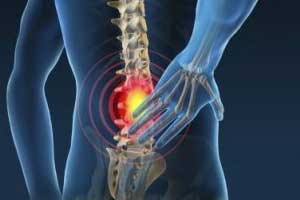- Home
- Editorial
- News
- Practice Guidelines
- Anesthesiology Guidelines
- Cancer Guidelines
- Cardiac Sciences Guidelines
- Critical Care Guidelines
- Dentistry Guidelines
- Dermatology Guidelines
- Diabetes and Endo Guidelines
- Diagnostics Guidelines
- ENT Guidelines
- Featured Practice Guidelines
- Gastroenterology Guidelines
- Geriatrics Guidelines
- Medicine Guidelines
- Nephrology Guidelines
- Neurosciences Guidelines
- Obs and Gynae Guidelines
- Ophthalmology Guidelines
- Orthopaedics Guidelines
- Paediatrics Guidelines
- Psychiatry Guidelines
- Pulmonology Guidelines
- Radiology Guidelines
- Surgery Guidelines
- Urology Guidelines
New study offers hope for people suffering from chronic neuropathic pain

Researchers have found that blocking spinal sortilin impairs the development of neuropathic pain following peripheral nerve injury. Sortilin is a protein expressed on the surface of nerve cells, plays a significant role in pain development in laboratory mice. This could also be the case in humans, according to a study that was published in the journal ‘Science Advances’.
Persistent pain, particularly neuropathic pain (NP), is a major health problem triggered by damage to or malfunction of the nervous system or by chronic diseases such as diabetes and multiple sclerosis. Neuropathic pain is seen as a sizeable economic and social burden, with a prevalence of up to 10 % in the general population according to some estimates. Current treatments for this condition are unsatisfactory and commonly associated with side effects.
According to a news item on the website of project partner Aarhus University, such chronic pain could lead to sensations like burning, stinging, freezing and stabbing. Patients suffering from this condition rarely find any relief from traditional painkillers, local anaesthesia, and even morphine.
Quoted in the same news item, lead author Assistant Professor Mette Richner says: “Once nerve damage has occurred, and the nerve cells go into overdrive, molecules are released which start a domino effect that ultimately triggers pain. The domino effect can be inhibited by a particular molecule in the spinal cord called neurotensin, and our studies show that the neurotensin is ‘captured’ by sortilin so that the brake is itself inhibited.”
Of mice and men
The researchers say more work is needed to determine whether sortilin, which is also known as neurotensin receptor 3 or NTSR3, could be blocked locally in the spinal cord. Corresponding author Associate Professor Christian Bjerggaard Vægter emphasizes that there’s a long way to go from mice to humans. “Our research is carried out on mice, but as some of the fundamental mechanisms are quite similar in humans and mice, it still gives an indication of what is happening in people suffering from chronic pain,” he adds. The team hopes that the findings will help the pharmaceutical industry develop blockers of this protein that can inhibit pain in the patients.
The PAINCAGE (The NGF system and its interplay with endocannabinoid signaling, from peripheral sensory terminals to the brain: new targets for the development of next-generation drugs for neuropathic pain) project was completed at the end of 2017. It focused on the nerve growth factor (NGF) and endocannabinoid (EC) systems that have emerged as central regulators of pain mechanisms involved in the onset and progression of NP and osteoarthritis. PAINCAGE investigated the role of the individual components of the NGF system in pain mechanisms and their interactions with the EC system in the regulation of neuropathic pain. It also examined various levels of pain transmission and perception, from peripheral sensory terminals to the brain.

Disclaimer: This site is primarily intended for healthcare professionals. Any content/information on this website does not replace the advice of medical and/or health professionals and should not be construed as medical/diagnostic advice/endorsement or prescription. Use of this site is subject to our terms of use, privacy policy, advertisement policy. © 2020 Minerva Medical Treatment Pvt Ltd